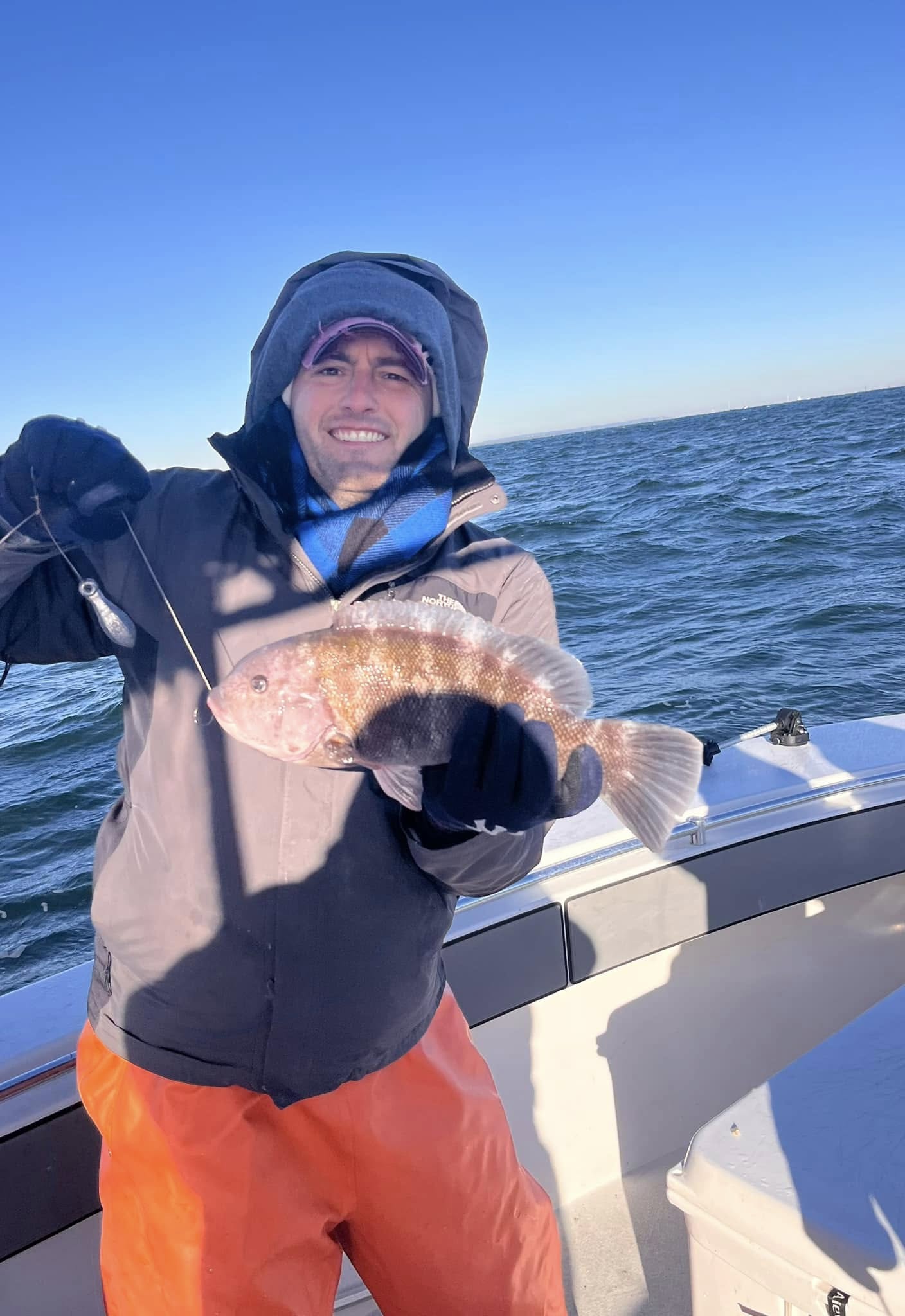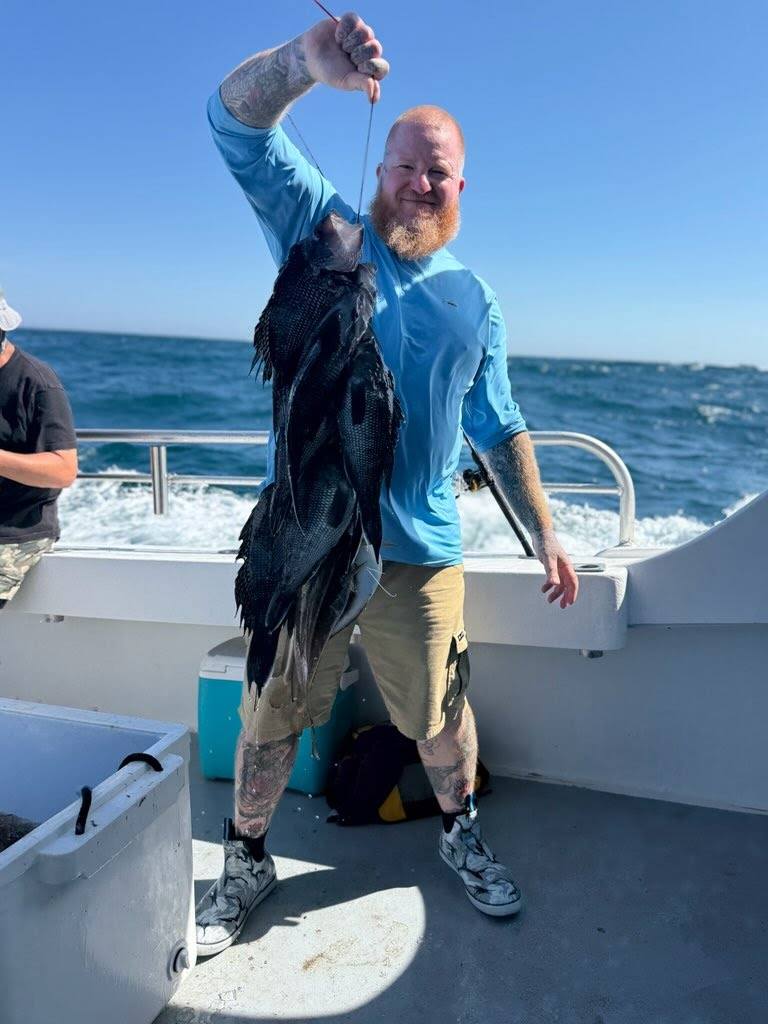Inshore, River Fishing in Somers Point
Inshore Striped Bass
River, Lake Fishing in Welland
Full Day Fishing Charter
16-Hour Canyon (Tuna/Wahoo/Mahi)
Deep Sea, Nearshore Fishing in Cape May
Mahi/Wahoo On The Troll
Inshore, Deep Sea Fishing in Point Pleasant Beach
8 HR Summer Flounder
Inshore, Deep Sea, Nearshore in Highlands
8 Hour Blackfish (tautog)
Inshore, Nearshore, River in Highlands
5-6 Hour Trip – Striped Bass
Inshore, Nearshore Fishing in Keyport
Fluke Fishing Trip
Deep Sea, Nearshore Fishing in Cape May
Half Or Full Day Trip
Deep Sea, Nearshore Fishing in Cape May
Marathon
We started Captain Experiences to make it easy to book fishing and hunting guides around the world. With over 2,000 Damn Good Guides, our platform makes finding and booking a trip seamless. Head here to check out our trips.
What is a Yellow Perch?
The yellow perch, commonly referred to as simply “perch”, is a freshwater perciform fish native to the midwest and northeast United States and much of Canada. Known for their vibrant green and gold coloration with black stripes, these fish are physically and genetically similar to the European perch and is sometimes considered a subspecies. Yellow perch are prey for larger fish but they are also predators when they reach adulthood. Various names for yellow perch have become prominent across their range including lake perch, American perch, raccoon perch, ringed perch, dodd fish, and striped perch.

Appearance
Yellow perch are one of the most easily identifiable freshwater fish thanks to their distinct appearance. With a gold or yellow body that transitions to green toward the dorsal fin and black vertical bars down their sides, these fish are truly unique. Their flashy sides are contrasted by the olive coloration down their back and a cream colored belly. The anal fins can vary in color ranging from green to yellow and orange.
Yellow perch have an oval shaped compressed body with a tapered but blunt snout and two separate dorsal fins. The juvenile perch tend to be dull with washed out colors that appear more white than adult fish.
Yellow Perch Lifespan
Yellow perch have a lifespan of nine to ten years but average lifespan varies based on the predator population and fishing pressure. They can reach sexual maturity in two years for males and three years for females. This early maturation makes perch prone to population booms and busts.Female perch tend to be larger, grow faster, live longer, and mature a year later than males.
Spawning takes place in the spring when water temperatures are between 35 and 65 degrees where they form large schools and inhabit shallow areas with little or no current. Spawning typically takes place at night or in the early morning. Perch lay their eggs in the form of gelatinous strands the consist of 10,000 to 40,000 eggs. Egg strands are commonly draped over vegetation, debris, or other structure. Females have the potential to spawn up to eight times in their lifetimes.
How Big Do Yellow Perch Get?
Yellow Perch typically range from four to twelve inches long but have been known to grow larger. The world record yellow perch 4 lb 3 oz was caught in 1865 in New Jersey, and is the longest-standing record for freshwater fish in North America.
Where do Yellow Perch Live?
The native distribution of yellow perch was originally driven by glacial melt along the Mississippi River. Their native range includes the Northern U.S. east of the Rocky Mountains and Canada but these fish have now been widely dispersed due to recreational and commercial interest. Yellow perch have also been introduced as prey for other popular fish like bass, walleye, musky, and northern pike. The US Fish Commission is responsible for introducing many species across the US in the late 1800s and early 1900s and yellow perch were no exception.
How to Locate Yellow Perch
Yellow perch habitat consists of vegetated shoreline waters and relatively shallow structures. Perch tend to form dense schools in shallow vegetation, because of their preference for small, weed-filled bodies of water. On rare occasions, yellow perch can be found in water deeper than 50 feet. Perch populations can survive but are less abundant in deep, clear, open bodies of water. River populations of perch school up in protected waters just out of the current and moderately vegetated areas.
The ideal temperature range for catching yellow perch is between 63 to 77 degrees. However, yellow perch have faster growth rates when water temperatures range between 70 and 75 degrees. If water temperatures exceed 78 degrees yellow perch will be stressed and the bite will fall off. Catching fish in warmer waters also increases the likelihood of death after release.
Predators of Yellow Perch
Nearly all predatory freshwater fish species including yellow perch prey on yellow perch at various life stages. The primary predators for yellow perch are walleye and largemouth bass. Research has shown that in northern lakes walleye will consume up to 60% of yellow perch in their first year of life, and 50% of perch during the second. In shallow lakes, largemouth bass play a similar role in shaping yellow perch populations.
In eastern North America, yellow perch are an extremely important food source for birds such as double-crested cormorants. The cormorants specifically target yellow perch as primary prey. Other birds also prey on them, such as eagles, herring gulls, hawks, diving ducks, kingfishers, herons, mergansers, loons, and white pelicans. High estimates show that cormorants were capable of consuming 29% of the age-three perch population. In Canada, yellow perch are effective at escaping predation seasonally by lake trout and other native fishes during summer due to their high thermal tolerance.
Yellow Perch Feeding Behavior - When To Catch Yellow Perch
Perch are commonly active during the day and inactive at night except during spawning when they are active both day and night. Yellow perch are small, lack agility, and have a top speed of only 12 mph which is why they are most often found in schools.
Schooling fish use sight to form school and yellow perch are no exception. The schools break up after dark and form again in the morning. A school of yellow perch holds between 25 and 200 fish which arrange themselves based on age and size. Older larger perch sometimes travel and hunt on their own. It is also common for males and females to form separate schools.
The diet of yellow perch varies based on size and age. Newly hatched perch feed almost exclusively on Zooplankton for the first year. After the first year, yellow perch begin to feed on small insects and eventually progress to crayfish, freshwater shrimp, and other small fish when they reach adulthood. Perch are not voracious eaters like bass or musky, and typically only eat around 1% of their body at each meal. The most active feeding time for yellow perch occurs just before dark and is typically the most productive time to target them.
How to Catch Yellow Perch
Yellow perch are typically thought of as an easy fish to catch but being prepared will help you get consistent bites. The most popular bait setup used to target these is a jig head tipped with maggots, wax worms, and small shrimp. Like many other panfish, perch know their way around a hook. Allow time for them to take the bait before setting the hook, but wait too long and your bait will be long gone.
Perch inhabit a variety of areas within a given body of water so it’s important to try several spots in search of a school. The three primary factors to consider when looking for a good perch spot are environment, predators, and prey. Using these factors you can begin to find ideal spots that will consistently produce perch. When you approach each spot try to work your bait deeper at first then slowly work your way up. Once you find a school of perch, anchor the boat or use your trolling motor to stay on top of the fish.
Light or ultra-light tackle with small hooks, jigs, and lures will be the best setup for catching these little fish. Yellow perch are active year-round throughout their range which makes them a great target in any season.
Ice Fishing for Yellow Perch
Ice fishing for perch is a very standard procedure with short jigging poles or tip-ups with tiny jigs or bait respectively. During early winter perch will be found near shallow mud flats, bays, and edges that hold the last remnants of vegetation. Larger bodies of water funnel perch into protected coves and flats while smaller lakes and ponds are more productive on edge of the shoreline drop-offs.
Management of Yellow Perch
Yellow perch populations across the country have fluctuated over the years which is normal for a fish in the middle of the food chain. Some states and municipalities have set size and bag limits for these fish but in many cases, they are not regulated at all.
Are Yellow Perch Good to Eat?
Yellow perch always take a top spot when discussing freshwater table fare. Commonly listed alongside or above other fan favorites like walleye and crappie, perch are undisputedly delicious. Most recreational anglers target yellow perch for the exceptional meat qualities and demand for the fish even supports a commercial fishery. It is commonly fried and served as a sandwich but it can be prepared a variety of different ways. Yellow perch are firmly embedded in Midwest culture and can be found on the menu at restaurants and supper clubs with some shops even featuring these fish on merchandise.
Joey Butrus
Updated on June 22, 2023

October 26, 2020

August 21, 2023

November 15, 2023

April 15, 2022

June 22, 2022
Related Articles
November 7, 2022
July 6, 2021
December 5, 2022
Featured Locations
- Fishing Charters Near Me
- Austin Fishing Guides
- Biloxi Fishing Charters
- Bradenton Fishing Charters
- Cabo San Lucas Fishing Charters
- Cancun Fishing Charters
- Cape Coral Fishing Charters
- Charleston Fishing Charters
- Clearwater Fishing Charters
- Corpus Christi Fishing Charters
- Crystal River Fishing Charters
- Dauphin Island Fishing Charters
- Daytona Beach Fishing Charters
- Destin Fishing Charters
- Fort Lauderdale Fishing Charters
- Fort Myers Fishing Charters
- Fort Walton Beach Fishing Charters
- Galveston Fishing Charters
- Gulf Shores Fishing Charters
- Hatteras Fishing Charters
- Hilton Head Fishing Charters
- Islamorada Fishing Charters
- Jacksonville Fishing Charters
- Jupiter Fishing Charters
- Key Largo Fishing Charters
- Key West Fishing Charters
- Kona Fishing Charters
- Lakeside Marblehead Fishing Charters
- Marathon Fishing Charters
- Marco Island Fishing Charters
- Miami Fishing Charters
- Montauk Fishing Charters
- Morehead City Fishing Charters
- Naples Fishing Charters
- New Orleans Fishing Charters
- New Smyrna Beach Fishing Charters
- Ocean City Fishing Charters
- Orange Beach Fishing Charters
- Panama City Beach Fishing Charters
- Pensacola Fishing Charters
- Pompano Beach Fishing Charters
- Port Aransas Fishing Charters
- Port Orange Fishing Charters
- Rockport Fishing Charters
- San Diego Fishing Charters
- San Juan Fishing Charters
- Sarasota Fishing Charters
- South Padre Island Fishing Charters
- St. Augustine Fishing Charters
- St. Petersburg Fishing Charters
- Tampa Fishing Charters
- Tarpon Springs Fishing Charters
- Venice Fishing Charters
- Virginia Beach Fishing Charters
- West Palm Beach Fishing Charters
- Wilmington Fishing Charters
- Wrightsville Beach Fishing Charters


































